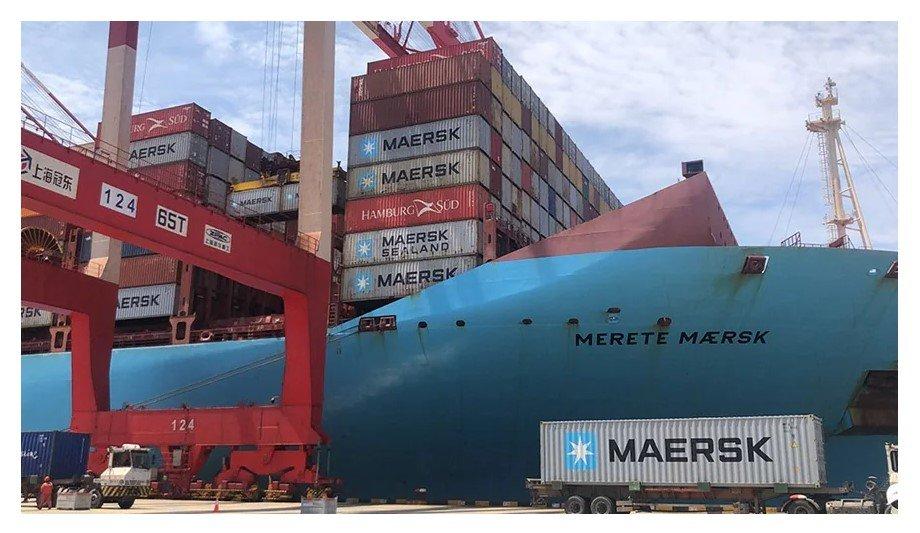With 27 containers from Vancouver, Canada, being loaded onto the container vessel ‘Merete Maersk’, the first batch of Chinese coastal relay of international cargo from a foreign carrier started its last leg of ocean transportation, en-route from Shanghai’s Yangshan terminal to Tianjin. This move marks a milestone in China’s opening of its cabotage market to foreign carriers.
International cargo relay
“We are proud to be the first foreign company that successfully implements international cargo relay in China. Transshipment in Shanghai allows us to improve services through optimised networks and could also address some of the factors behind the bottlenecks in Chinese supply chains, shortening transit times, reducing emissions, and freeing up additional capacity for our customers,” Soren Skou, CEO of the A.P. Moller – Maersk.
“We appreciate this initiative by the Chinese authorities. It is an important step towards optimising relay regulations, and we hope it will serve as an inspiration in other geographies where restrictions on international relay still exist."
Developing an international shipping centre
China’s Ministry of Transport announced that international cargo relays would be allowed on a trial until the end of 2024
The breakthrough in Yangshan as a result of the China State Council’s 2019 overall plan to boost the development of the international shipping centre in Shanghai. In November 2021, China’s Ministry of Transport announced that international cargo relays would be allowed on a trial until the end of 2024.
Based on third-country reciprocity conditions and meeting several additional criteria, qualified carriers can use their owned vessels to carry out international cargo relays between Shanghai Yangshan and northern Chinese ports, including Dalian, Tianjin, and Qingdao.
Network optimisation, shorter transit time
In China, international cargo relay shipments between two Chinese ports have historically been considered cabotage and therefore strictly prohibited for foreign carriers. Instead, these carriers use Busan, Singapore, and other international ports for transshipment.
This initiative can also strengthen Shanghai’s role as an international maritime centre, with more throughput and revenue occurring. The network optimisation and shorter transit time will also reduce the CO2 footprint of the ocean transport involved.











